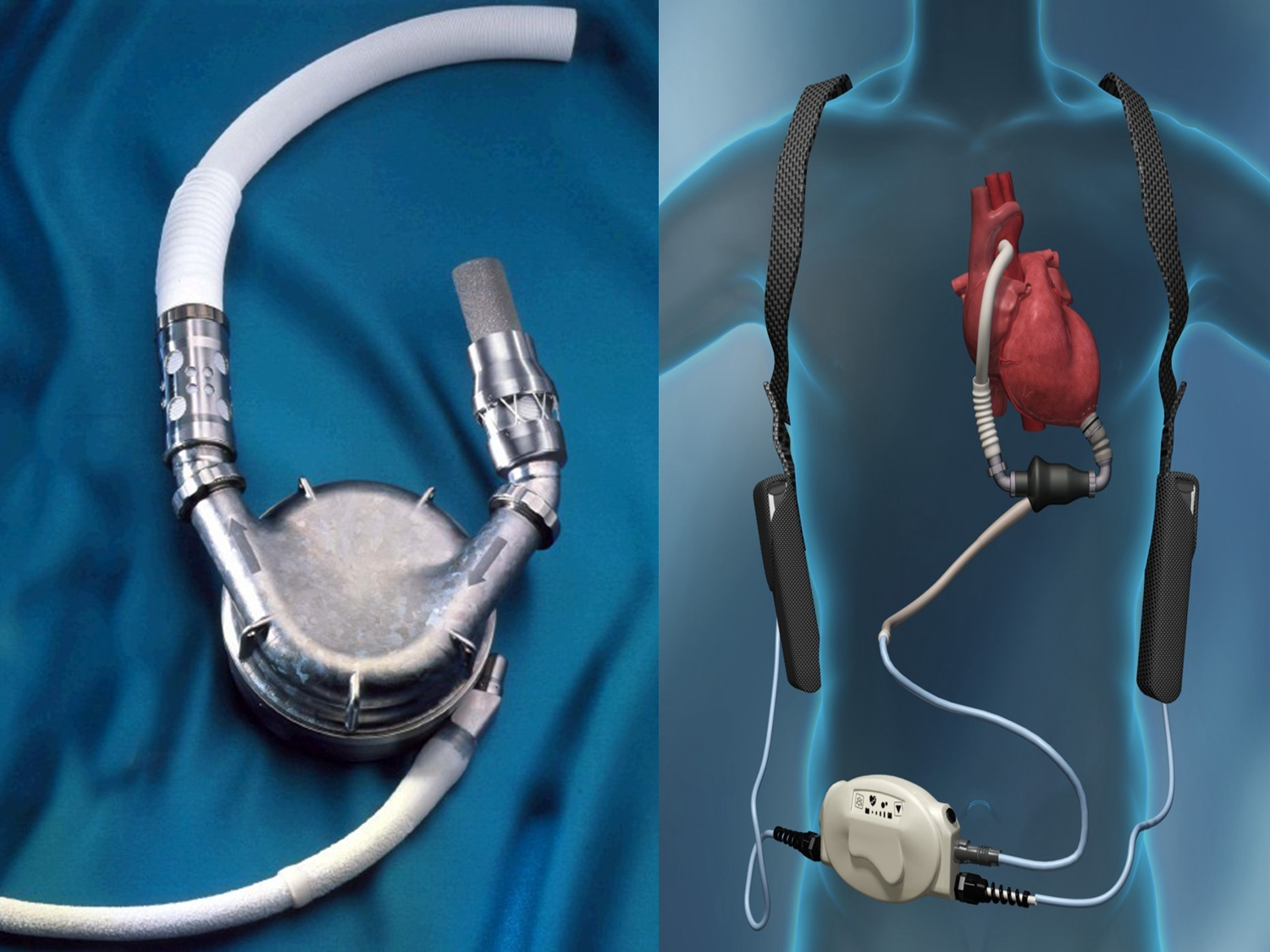Ventricular Assist Devices (VADs)
A ventricular assist device (VAD) is a mechanical device that is used to take over the pumping function for one or both of the
heart’s ventricles. A VAD may be necessary when heart failure progresses to the point that medications and other treatments are no longer effective.
 For persons with severe or end-stage heart failure, ventricular assist devices (VADs) may be required to support the heart in order to ensure an adequate cardiac output (amount of blood pumped out by the heart per minute) to meet the body’s needs.
For persons with severe or end-stage heart failure, ventricular assist devices (VADs) may be required to support the heart in order to ensure an adequate cardiac output (amount of blood pumped out by the heart per minute) to meet the body’s needs.
Heart transplantation is an option for some patients with severe heart failure (HF), but during this late stage of HF, over 50 percent of persons on a waiting list for heart transplantation will die before receiving a donor heart. Organ donors are in short supply and do not meet the demand for patients waiting for heart transplant. The wait time for heart transplantation may often exceed 200 days.
Long wait times and decreased availability of donors strengthens the need to seek other methods to support the failing heart. Patients may die waiting for a transplant or important organs such as the liver and kidney may become permanently damaged before a donor heart is available. VADs have shown great promise in maintaining adequate blood circulation in cases of severe HF.
VADs may be used for the following situations:
- bridge to transplant - implantation of a VAD to support the patient with end-stage HF who is waiting for heart transplantation.
- bridge to recovery - implantation of a VAD to support the patient with potentially reversible HF. Once the heart has recovered sufficiently, the VAD may be removed.
- destination therapy - implantation of a VAD to support the patient with end-stage HF who is not a candidate for heart transplantation. A portable VAD may be used in this situation so that the patient may be discharged from the hospital and return home.